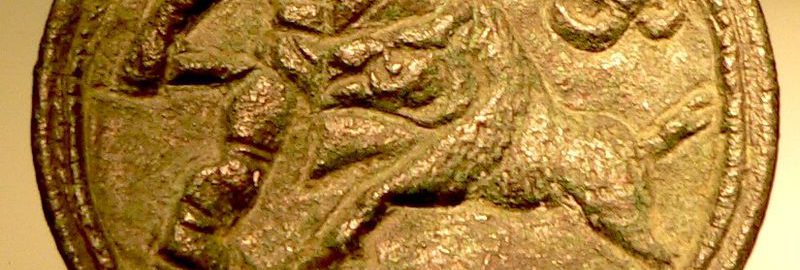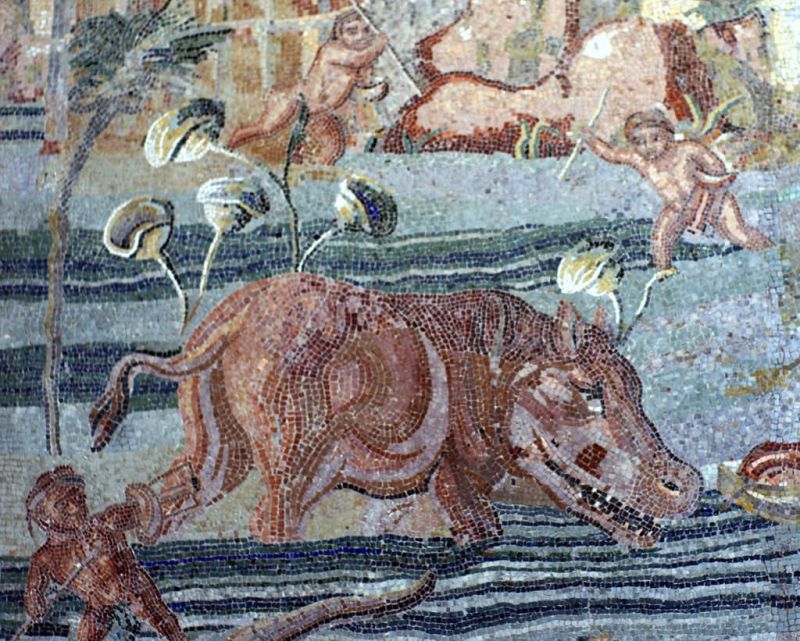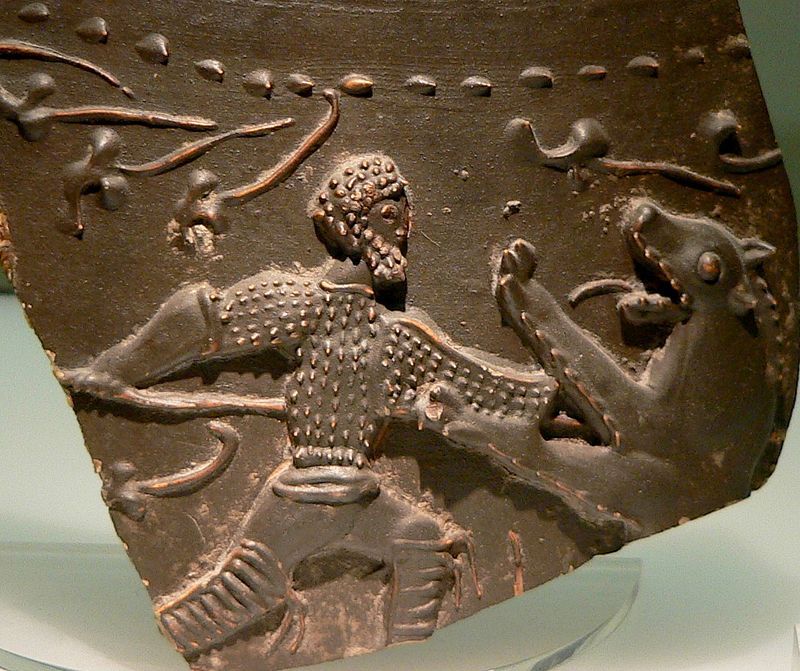Venatio (plural venationes), literally “hunting”, it was a form of entertainment organized in Roman amphitheaters consisting of hunting and killing wild animals. Wild predators were brought to Rome from the depths of the Roman Empire and brought to the arena to the delight of spectators.
Venatio took place in the morning before the highlight of the day – afternoon gladiatorial duels. They were organized at Roman Forum, Saepta Julia and Circus Maximus, although none of these places could protect crowds of viewers from exposed wild animals.
Special precautions were taken to prevent animals from escaping from the arena – barriers and excavators were mounted. Very few animals managed to survive venatio, although sometimes bestiarius – a gladiator trained to fight animals – failed.
It is not known when exactly the Romans began to organize this type of show. The first venatio mentioned in the sources took place in 251 BCE, when Lucius Metellus brought 142 elephants from Sicily to Circus Maximus, after the victory over the Carthaginians in First Punic War. It does not seem, however, to be an example venatio , mainly due to the fact that the elephants were killed by the Romans, just because they did not know what to do with them. Thus, elephants appeared in the Eternal City only for show.
Fighting wild animals in the arena appeared in 186 BCE, when Marek Fulwiusz Nobilior, the winner of the Ethol Union, staged games in which panthers and lions fought. In 168 BCE at the request of the Kuril edillas of Publius Cornelius Scipio Nazyka and Publius Lentulus, Ludi Circenses took place, during which 63 leopards and 40 bears and elephants took place. Since then, venationes. took place regularly during Ludi Circenses
Julius Caesar during his third consulate in 45 BCE organized venatio, lasting five days, with great splendor. Giraffes and camels were brought to Italy for the first time. It was also thanks to Caesar that there were bullfights in which the Thessalian riders chased the bulls around the arena until they got tired. Then they were spent and killed. He liked the entertainment so much that it was repeated by the emperor Caligula and Nero.
According to Cassius Dio, the adopted son of Caesar and the first ruler of the empire Octavian Augustus, 29 BCE, brought hippos and rhinos to Rome. Also thanks to him, a snake 50 cubits long and 36 crocodiles appeared in the arena.
In one day, venationes, could have killed a thousand wild animals. For example, during the reign of Octavian Augustus, venationes,, which killed 3,500 elephants, were organized. According to Cassius Dio, during the games organized by the Roman Emperor Titus for the inauguration of the Colosseum, 5000 wild boars were killed and 4000 tame animals. Trajan, to celebrate his invasion of Dacia, organized games in which 11,000 animals died.
The animals participating in venatio were mostly wild predators, although there were also exceptions. Popular were: lions, tigers, elephants, bears, deer, wild goats, dogs, camels, rabbits. Some of the animals were trained and showed tricks instead of fighting. Wolves were not usually used to fight in the arena, mainly for religious reasons.
The most popular because of the wildness was the lion. Julius Caesar used 400 lions in Circus Maximus imported mainly from northern Africa and Syria. The exotic nature of the animals added to the games’ chic. The image of the lion as the quintessence of wildness appeared not only in the arena. Sculptures depicting a lion devouring its victim were often used on tombstones as a symbol of bloodthirsty death.
The acquisition of animals from distant corners of the empire was a testimony of the wealth and power given by the emperor to the inhabitants of Rome, as well as a measure of the empire’s sovereignty over the world of people and animals. For many Romans, it was also a unique opportunity to see exotic animals.
Executions of lower-level Roman citizens organized in the arena, a variation of venatio humiliores. Execution usually took the form of burning at the stake, crucifixion or being devoured to wild animals (demnatio ad bestias). According to ancient authors, viewers with better manners and seriousness went to dinner for execution. Criminals were often sentenced to fight beasts without weapons and weapons. Such people were called, the word used earlier, bestiarii.
Animals have not always served only as victims and killers in various massacres on the arena. Some performances consisted of showing trained and tame animals. Pliny the Elder and Marcjalis mentions panthers pulling a cart, elephants kneeling in front of the imperial box, or tame lions that captured and released an intact hare.
Venationes was organized after the official ban on gladiators. We know this through the law issued by Honorius and Theodosius. It was intended to secure a convoy with imported animals. According to its provisions, a fine of 5 pounds of gold was imposed on anyone who injured a transported animal. The games in which animals took part took place after the fall of Rome, in Constantinople during the reign of Emperor Justinian.









